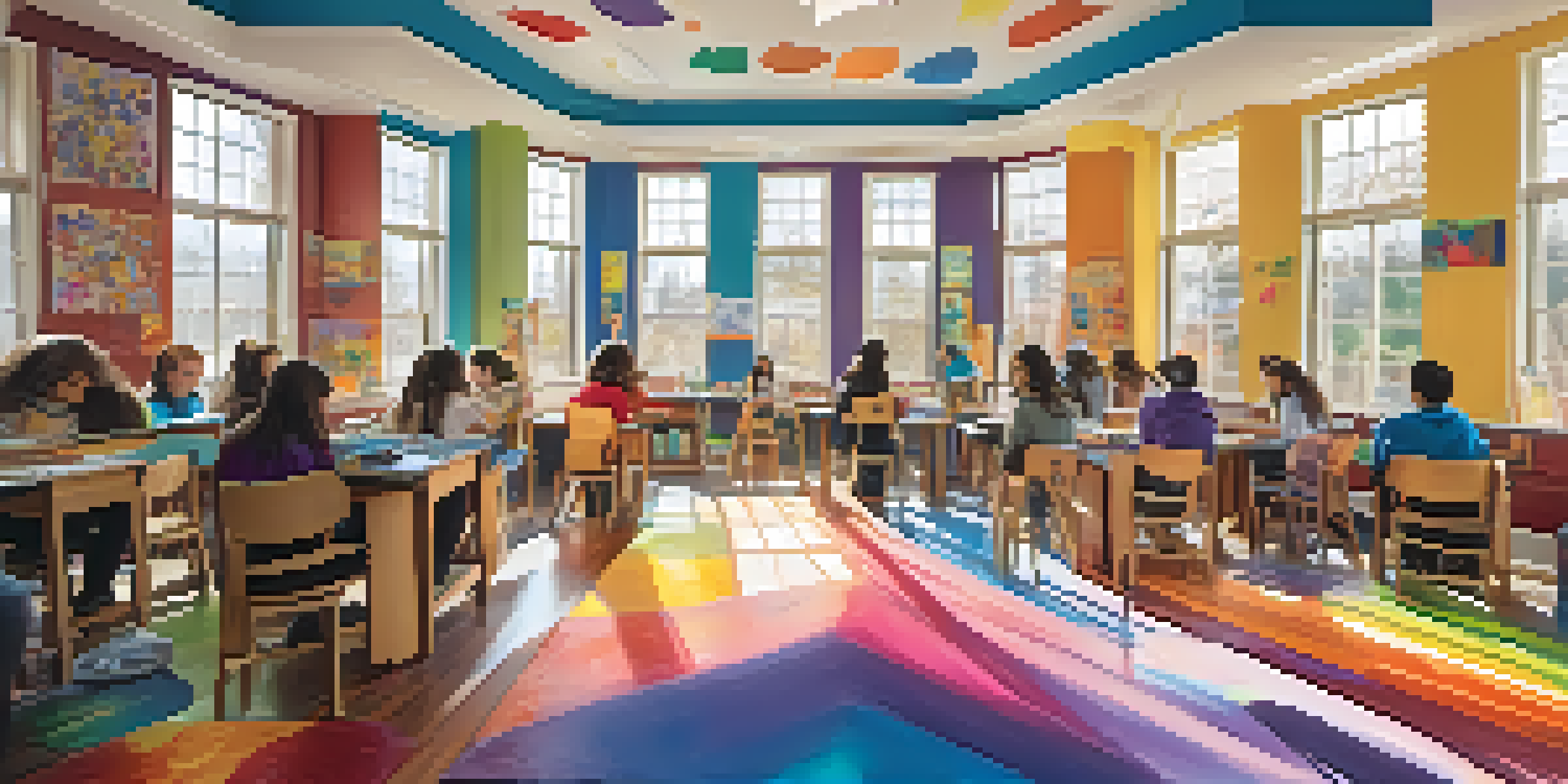Integrating Arts into Student-Centered Learning

Understanding Student-Centered Learning and Its Importance
Student-centered learning puts students at the heart of the educational process. It encourages active participation, allowing learners to take ownership of their education. This approach fosters critical thinking and creativity, essential skills in today’s world.
Education is not the filling of a pail, but the lighting of a fire.
Traditional education often revolves around a teacher-led model, where students passively receive information. However, in a student-centered environment, the focus shifts to collaboration and personalized learning experiences. This makes education more relevant and engaging for students.
Integrating arts into this framework can amplify its effectiveness. Arts can serve as a medium for expression, helping students to connect personally with the material and enhancing their overall learning experience.
The Role of Arts in Enhancing Creativity and Engagement
Arts education plays a vital role in nurturing creativity, a key component of student-centered learning. When students engage in artistic activities, they explore new ideas and think outside the box. This process encourages them to approach problems from different angles.

Moreover, arts can help students express themselves in ways that traditional subjects may not allow. For instance, a student struggling with writing may find it easier to convey their thoughts through drawing or music. This freedom can lead to increased motivation and engagement.
Student-Centered Learning Defined
This educational approach places students at the core, encouraging active participation and ownership of their learning.
By integrating arts into learning, educators can create a more dynamic classroom environment. Students are not just recipients of knowledge; they become active participants, using their creativity to enhance their understanding and retention of information.
Fostering Collaboration Through Artistic Projects
One of the key benefits of integrating arts into student-centered learning is the opportunity for collaboration. Artistic projects often require teamwork, allowing students to learn from one another and develop social skills. This collaborative spirit can lead to deeper understanding and stronger relationships among peers.
Creativity takes courage.
For example, a group of students might work together on a mural that represents their community. As they brainstorm ideas and share responsibilities, they learn to appreciate different perspectives and contribute to a common goal. This not only enhances their artistic skills but also fosters a sense of belonging.
Such projects can be invaluable in building a positive classroom culture. When students collaborate, they feel more connected to their peers and their learning environment, ultimately leading to a more enriching educational experience.
Using Arts to Differentiate Learning Styles
Every student has a unique learning style, and integrating arts into education can address these diverse needs. Some students may thrive in visual environments, while others excel through auditory or kinesthetic experiences. Arts provide multiple avenues for students to engage with content.
For instance, a teacher might use drama to explore a historical event, allowing students to embody different characters. This approach appeals to kinesthetic learners who benefit from movement and role-playing. Meanwhile, visual learners can create posters or digital art to represent their understanding.
Arts Foster Creativity and Engagement
Integrating arts into education nurtures creativity and allows students to express themselves in diverse ways.
By incorporating various artistic methods, educators can cater to individual preferences, ensuring that all students have the opportunity to succeed. This differentiation not only boosts confidence but also promotes a more inclusive classroom atmosphere.
Assessment Strategies for Arts-Integrated Learning
Assessing student progress in an arts-integrated learning environment can be challenging but also rewarding. Traditional assessments often fail to capture the full scope of a student’s abilities. Instead, educators can use alternative assessment methods that reflect the creative process and final products.
For example, portfolios showcasing a student’s artistic journey can provide insight into their growth and understanding. This can include drafts, reflections, and completed works, allowing students to demonstrate their learning in a holistic way. Peer assessments and self-evaluations can also be valuable tools.
By embracing these innovative assessment strategies, teachers can gain a more comprehensive view of student learning. This approach encourages students to take pride in their work and reflect on their artistic development, further enhancing their educational experience.
Challenges of Integrating Arts into Student-Centered Learning
While the benefits of integrating arts are clear, challenges do exist. Teachers may feel underprepared to incorporate artistic elements into their curriculum, especially if they lack a strong arts background. This can lead to hesitance in fully embracing an arts-integrated approach.
Additionally, there may be limited resources available for art supplies or programs within schools. Without proper funding or support, implementing arts-based projects can become a daunting task for educators. This can hinder the creative potential of student-centered learning.
Collaboration Enhances Learning
Artistic projects promote teamwork, enabling students to learn from each other and build stronger relationships.
Despite these challenges, educators can seek professional development opportunities or collaborate with local artists and organizations. By building a network of support, teachers can effectively integrate arts into their classrooms, creating richer learning experiences for their students.
Future Prospects: The Evolution of Arts in Education
As education continues to evolve, the integration of arts into student-centered learning is likely to grow. With increasing recognition of the importance of creativity and innovation, schools are beginning to prioritize arts education. This shift opens up new possibilities for engaging students.
Furthermore, technology plays a significant role in this evolution. Digital tools can enhance artistic expression, allowing students to explore new mediums and collaborate in innovative ways. This integration of technology and arts can create exciting learning experiences that resonate with today’s learners.

Looking ahead, the future of arts in education seems promising. By embracing this integration, educators can cultivate a generation of thinkers and creators who are prepared to tackle the challenges of tomorrow.